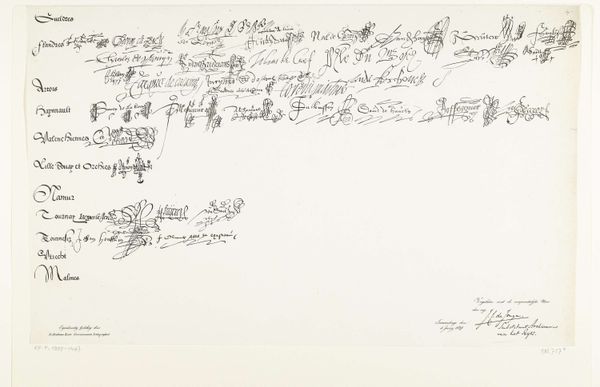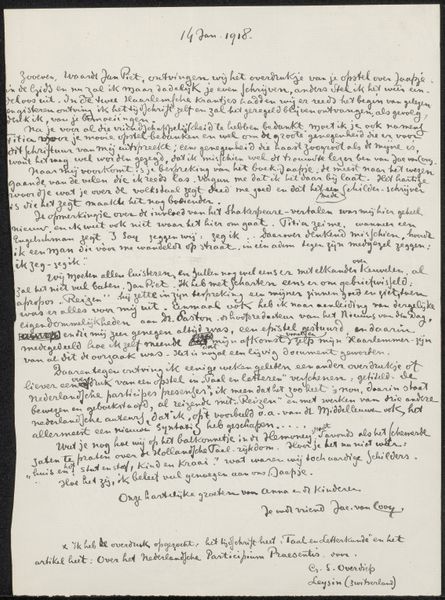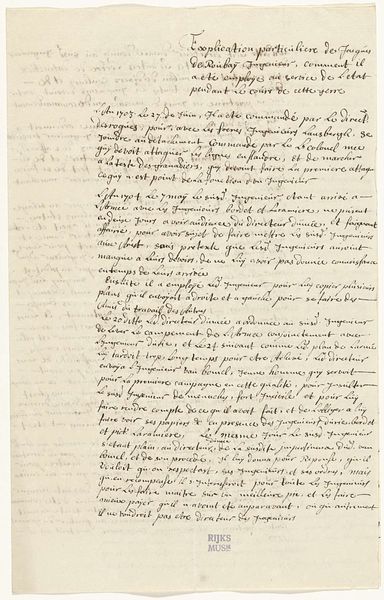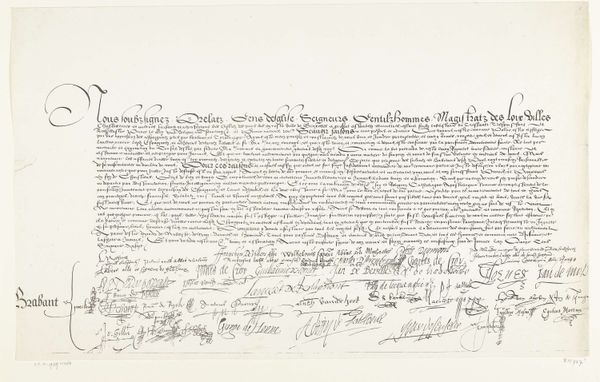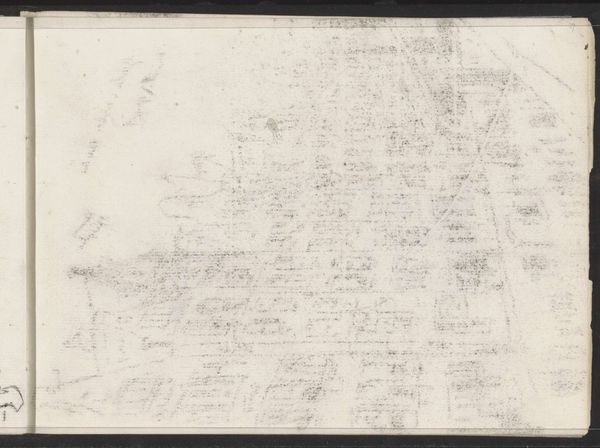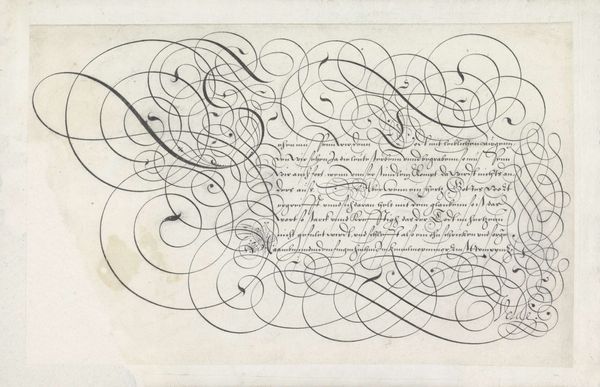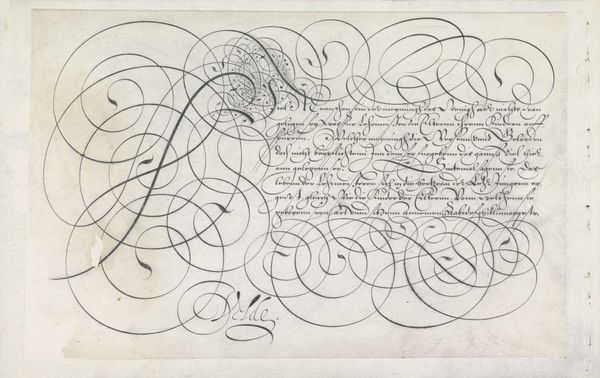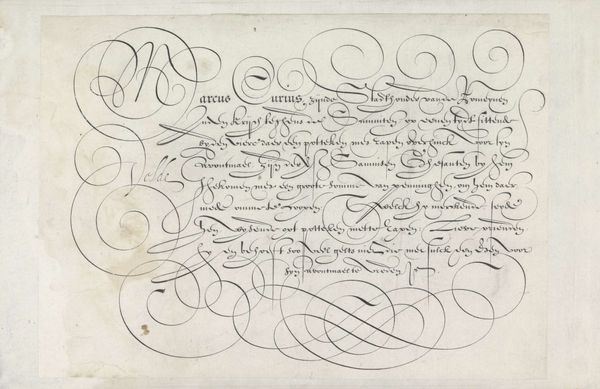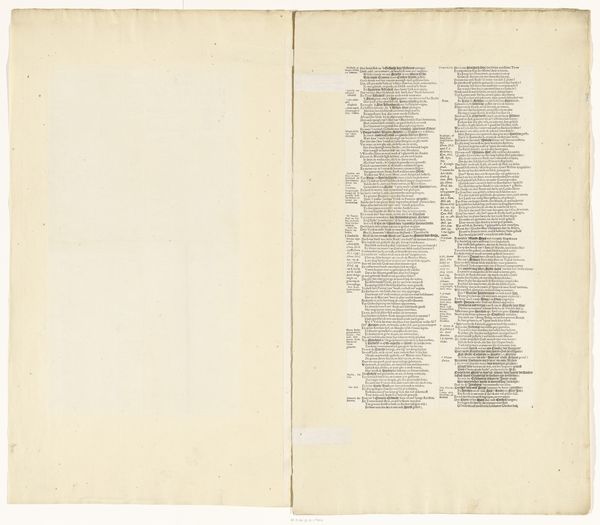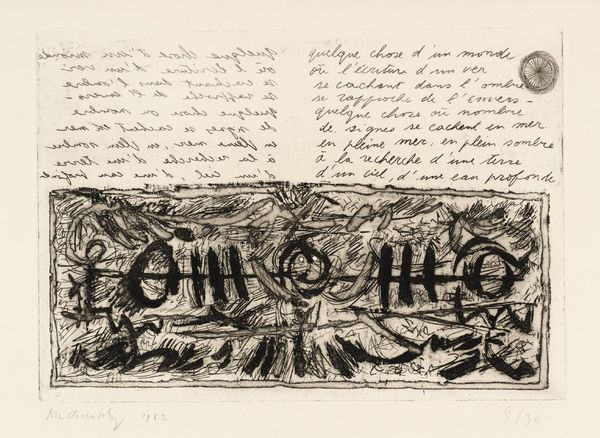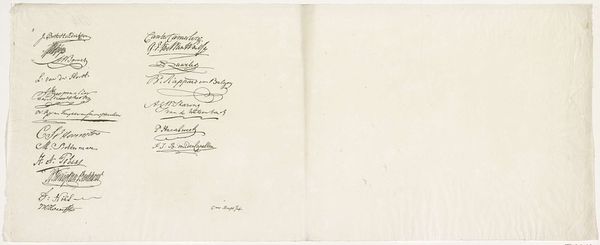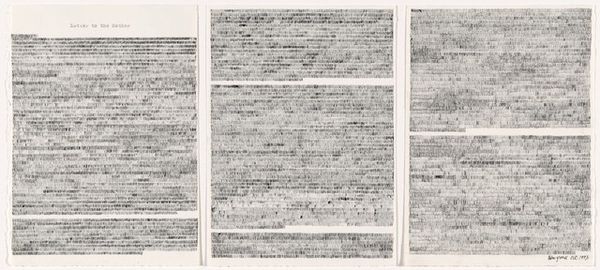
Tweede blad van de facsimile van het geschrift van de Unie van Brussel met handtekeningen, 1577 1827
0:00
0:00
drawing, mixed-media, textile, paper, ink
#
drawing
#
comic strip sketch
#
mixed-media
#
medieval
#
pen sketch
#
hand drawn type
#
hand lettering
#
textile
#
paper
#
linework heavy
#
ink
#
sketchwork
#
pen-ink sketch
#
pen work
#
sketchbook drawing
#
calligraphy
#
initial sketch
Dimensions: height 310 mm, width 620 mm
Copyright: Rijks Museum: Open Domain
Editor: This is an intriguing piece. It’s titled “Tweede blad van de facsimile van het geschrift van de Unie van Brussel met handtekeningen, 1577”, created in 1827 by Daniël Abrahams. It appears to be a mixed-media drawing with ink on paper. It's like a dense tapestry of handwritten script and signatures, and I'm struck by how chaotic and yet somehow purposeful it seems. What can you tell me about its context and meaning? Curator: It's fascinating how you perceive both chaos and purpose. That tension speaks directly to the socio-political climate it represents. This is a reproduction, made in 1827, of a key document from 1577 – the Union of Brussels. That union was a pivotal, but ultimately failed, attempt to unite the provinces of the Netherlands against Spanish rule. Editor: So, the chaos visually represents the political turmoil? Curator: Precisely. The density of signatures, seemingly piled atop one another, represents the multitude of voices and interests involved in this historical moment. It's a political act transcribed as script, re-presented to a later public during a very different, but equally fraught political climate. What do you notice about how these names are organized spatially? Editor: Well, they seem grouped into clusters. Maybe representing different regions or affiliations? Curator: Exactly! Think of this image as a kind of early political map, but instead of geographic borders, we have a landscape of signatures staking their claim within the Union. The very act of reproducing this document nearly two centuries later – making it accessible to a new, broader audience – reinforces a particular narrative around Dutch identity and independence. Editor: It’s amazing how much historical information is embedded within what at first glance seems like just messy handwriting! It makes me think about how we present historical documents today. Curator: Indeed. Consider the role of the Rijksmuseum itself. How does its existence and curation practices shape our understanding of this piece, and of Dutch history as a whole? Editor: That's a lot to ponder. Thanks for the historical perspective! I’ll never look at a signed document the same way.
Comments
No comments
Be the first to comment and join the conversation on the ultimate creative platform.
